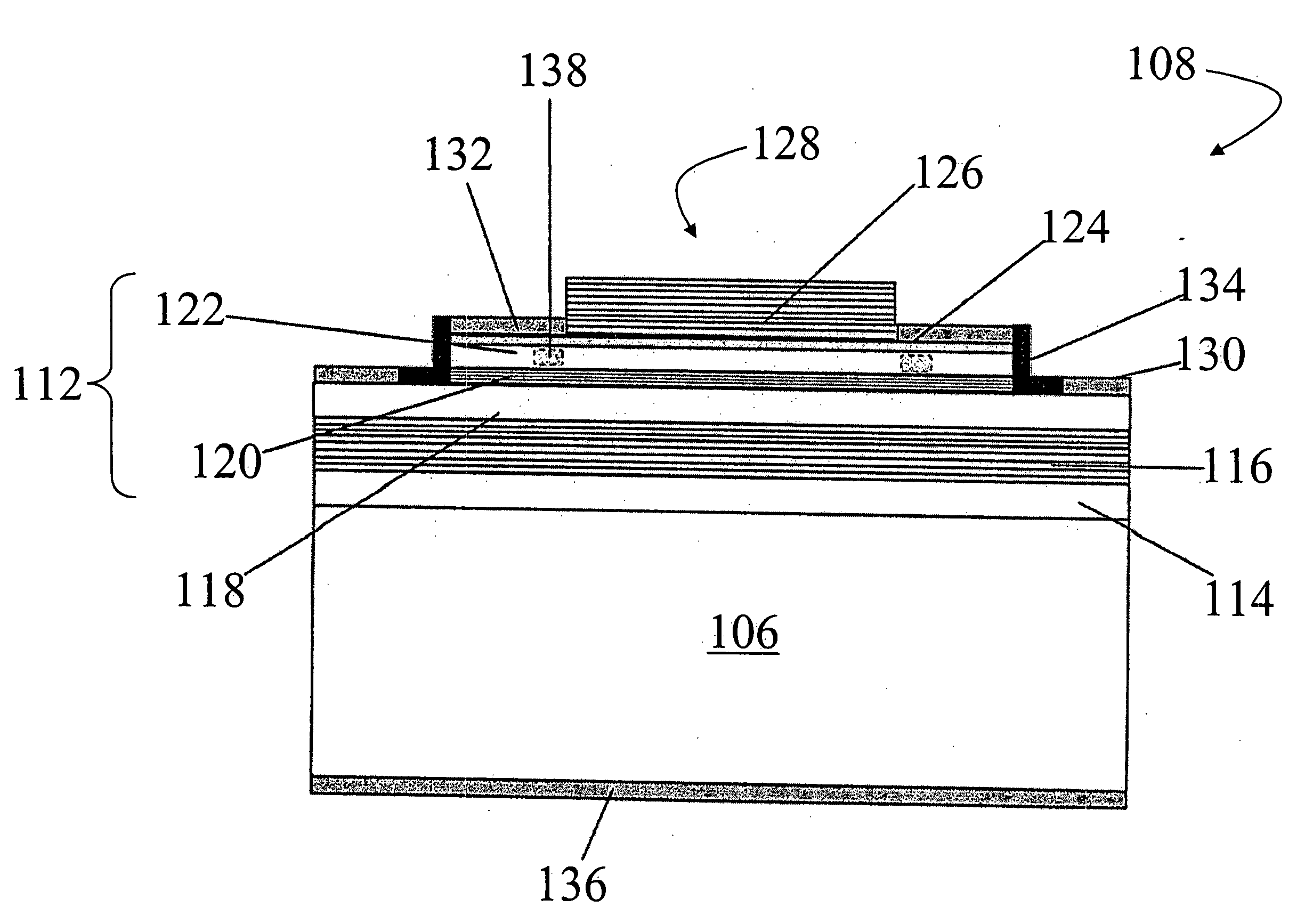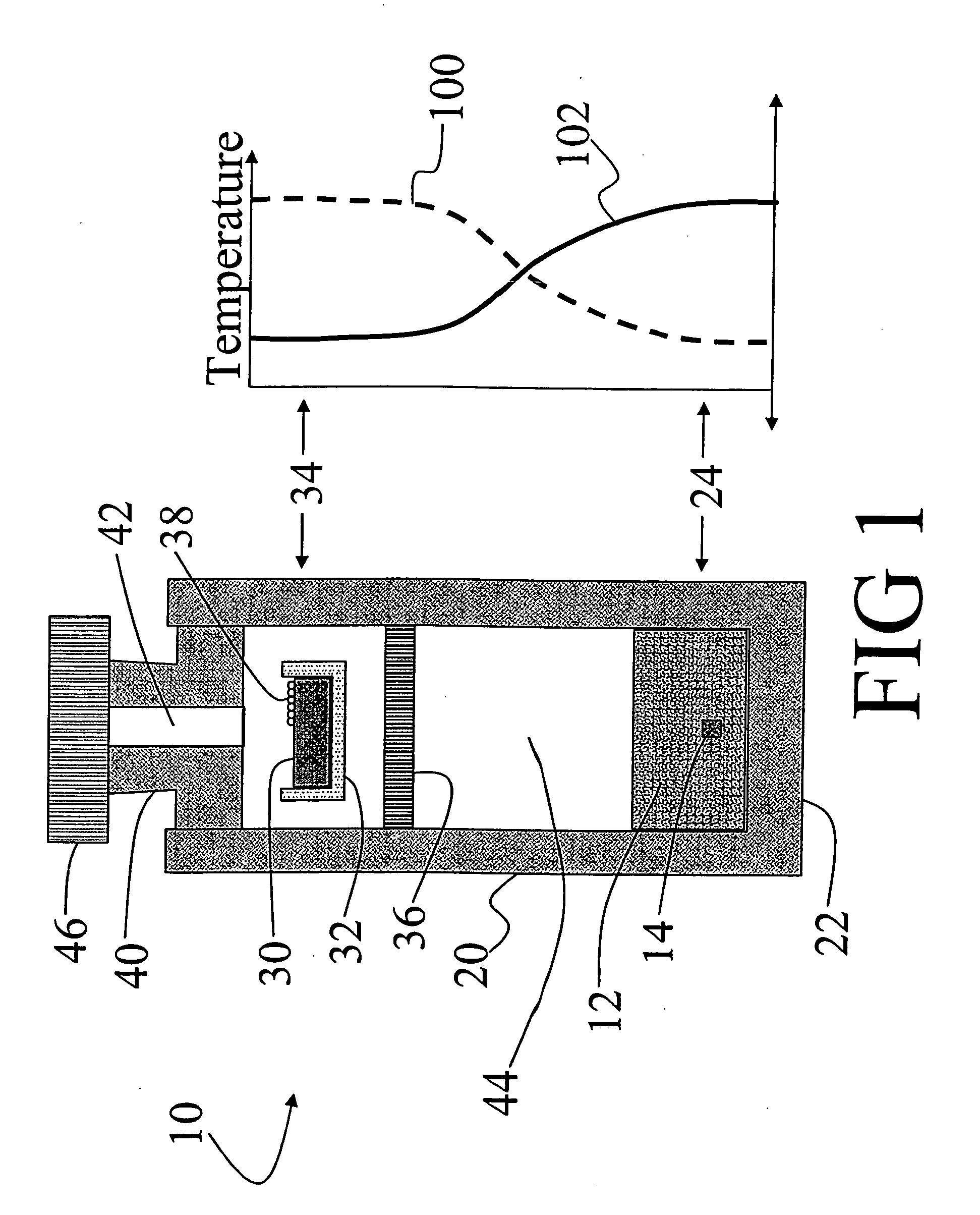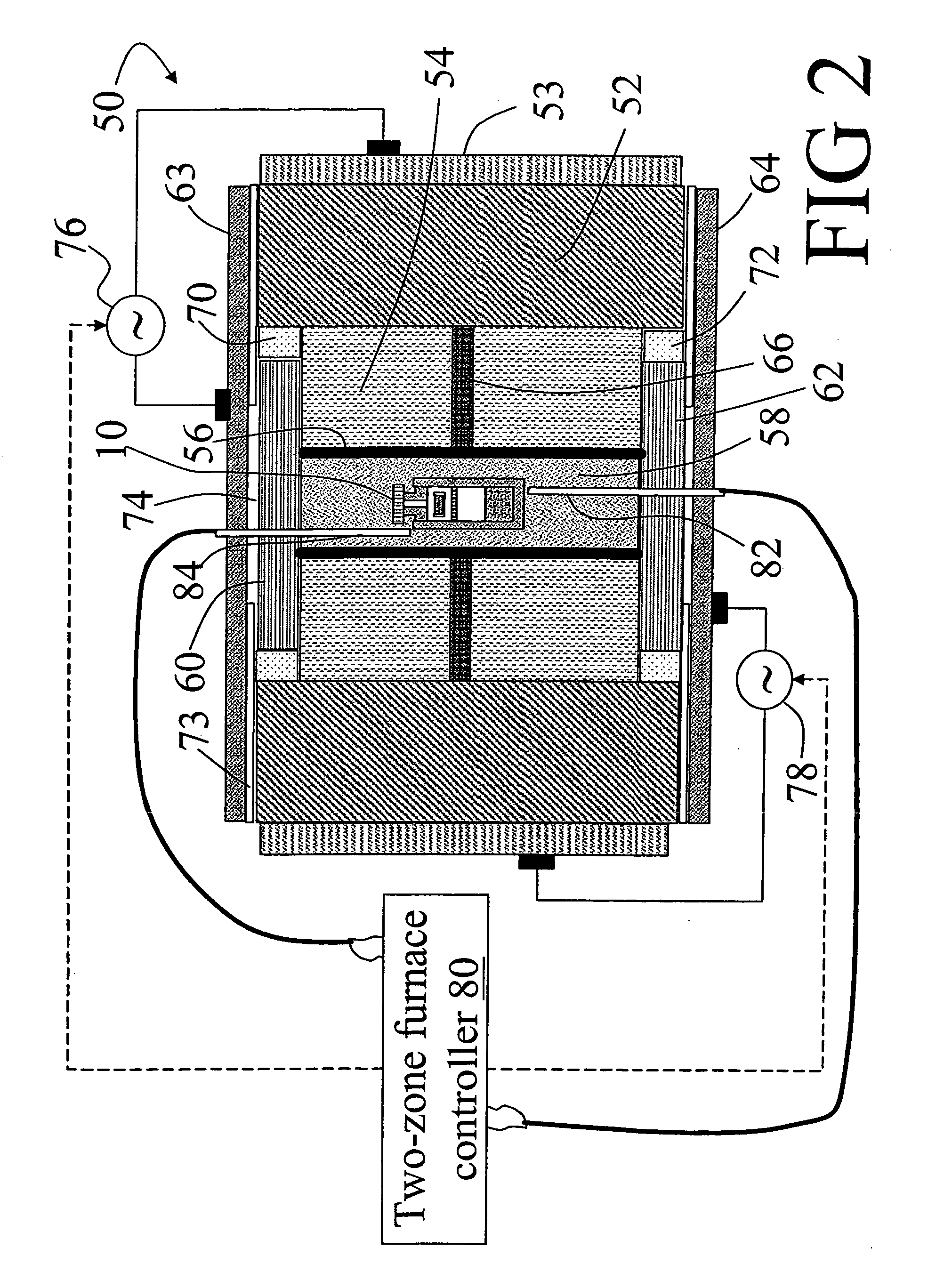Resonant cavity light emitting devices and associated method
a technology of light-emitting devices and resonance cavities, which is applied in the direction of crystal growth process, sub-protective fluid, semiconductor lasers, etc., can solve the problems of reducing efficiency, -scattering loss, and difficult to fabricate reliable resonant cavity devices
- Summary
- Abstract
- Description
- Claims
- Application Information
AI Technical Summary
Benefits of technology
Problems solved by technology
Method used
Image
Examples
Embodiment Construction
[0035] The invention may include embodiments that may relate to resonant cavity light emitting devices. The invention may include embodiments that may relate to a method of making and / or using resonant cavity light emitting devices, or components thereof.
[0036] Approximating language, as used herein throughout the specification and claims, may be applied to modify any quantitative representation that could permissibly vary without resulting in a change in the basic function to which it is related. Accordingly, a value modified by a term such as “about” is not to be limited to the precise value specified, and may include values that differ from the specified value. In at least some instances, the approximating language may correspond to the precision of an instrument for measuring the value. Similarly, “free” may be used in combination with a term, and may include an insubstantial number, or trace amounts, while still being considered free of the modified term.
[0037] With reference...
PUM
| Property | Measurement | Unit |
|---|---|---|
| dislocation density | aaaaa | aaaaa |
| dislocation density | aaaaa | aaaaa |
| optical absorption coefficients | aaaaa | aaaaa |
Abstract
Description
Claims
Application Information
 Login to View More
Login to View More - R&D
- Intellectual Property
- Life Sciences
- Materials
- Tech Scout
- Unparalleled Data Quality
- Higher Quality Content
- 60% Fewer Hallucinations
Browse by: Latest US Patents, China's latest patents, Technical Efficacy Thesaurus, Application Domain, Technology Topic, Popular Technical Reports.
© 2025 PatSnap. All rights reserved.Legal|Privacy policy|Modern Slavery Act Transparency Statement|Sitemap|About US| Contact US: help@patsnap.com



